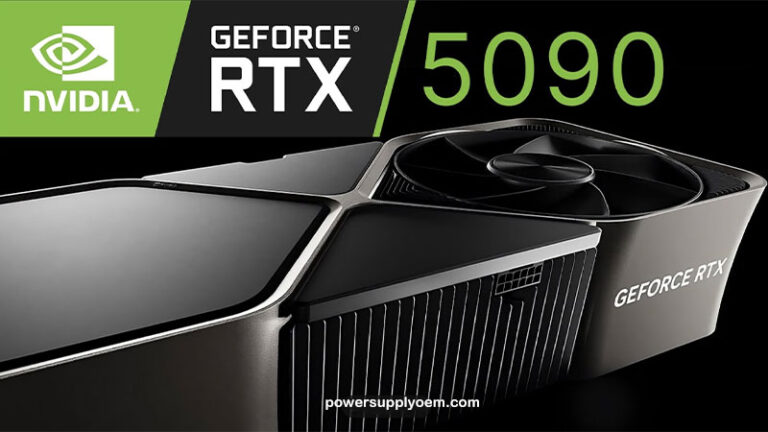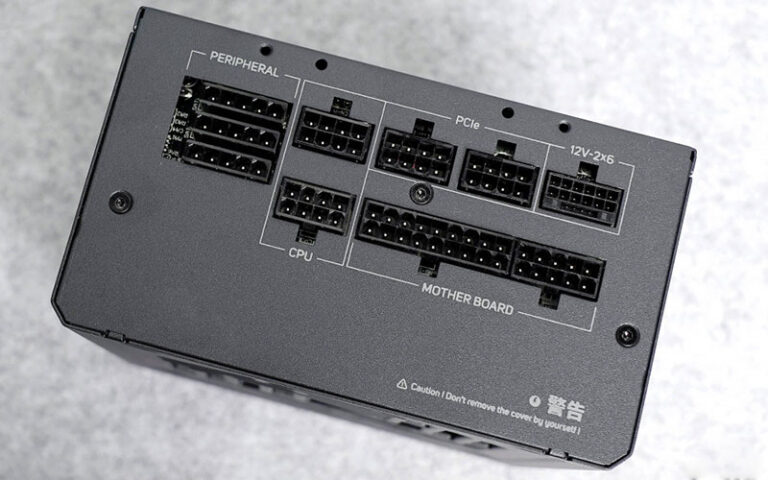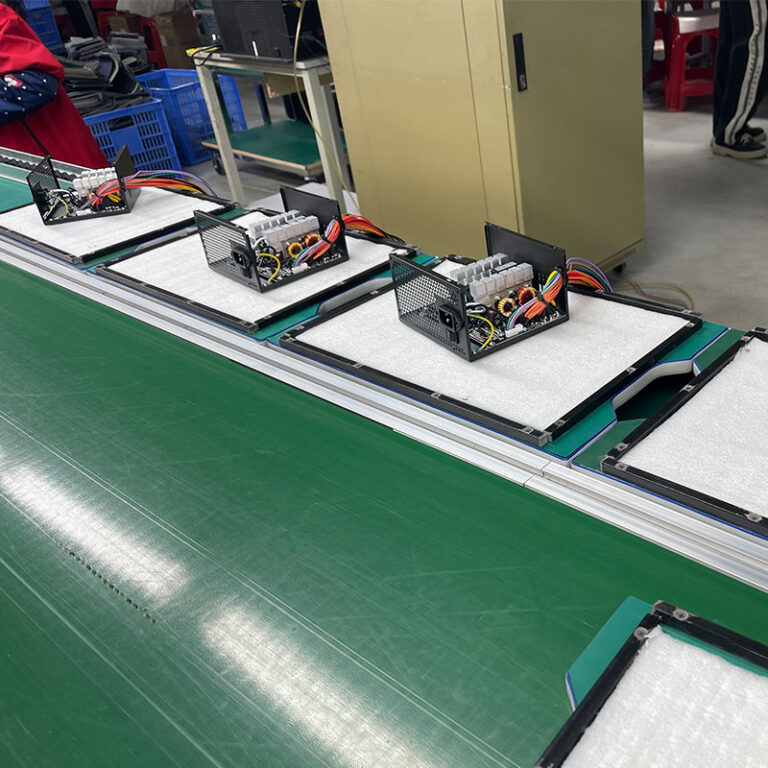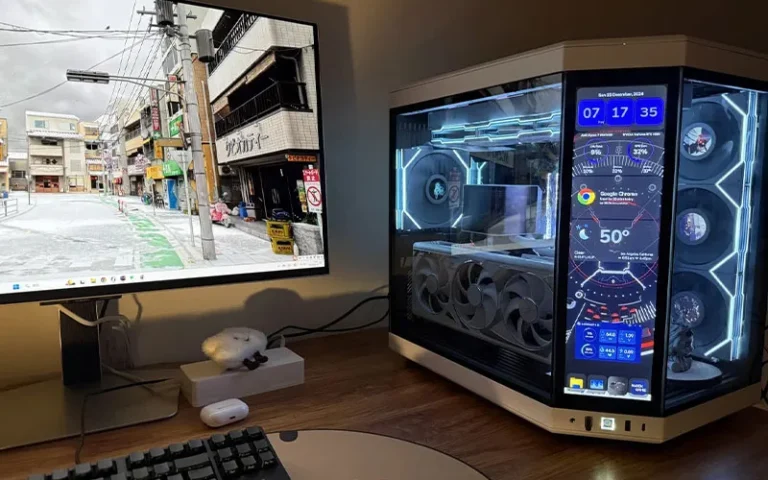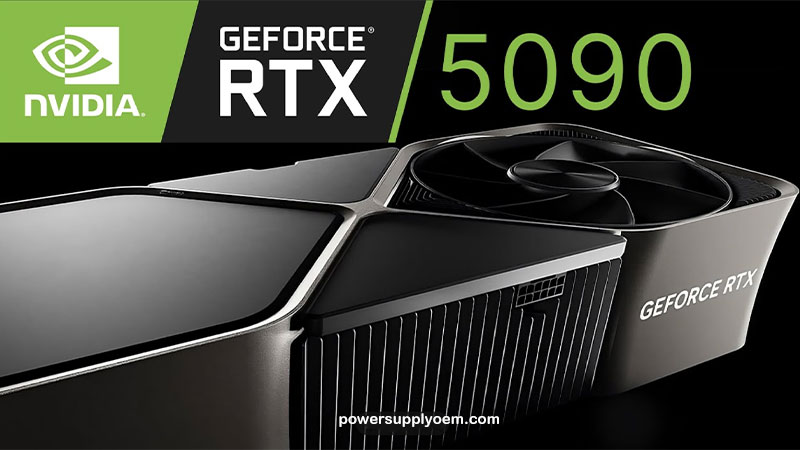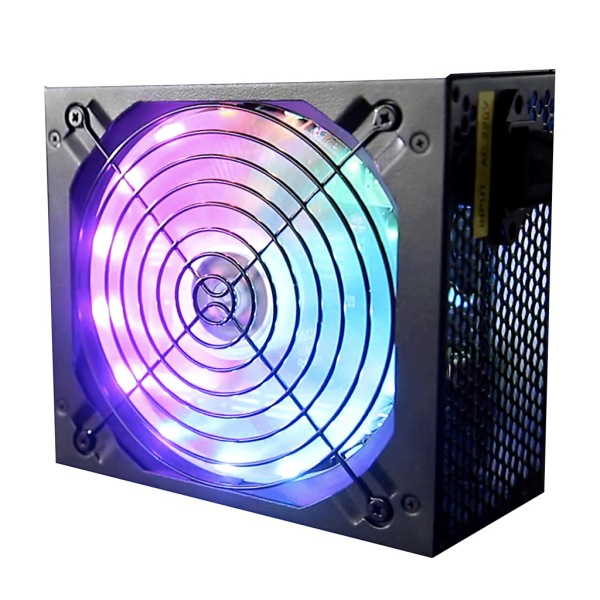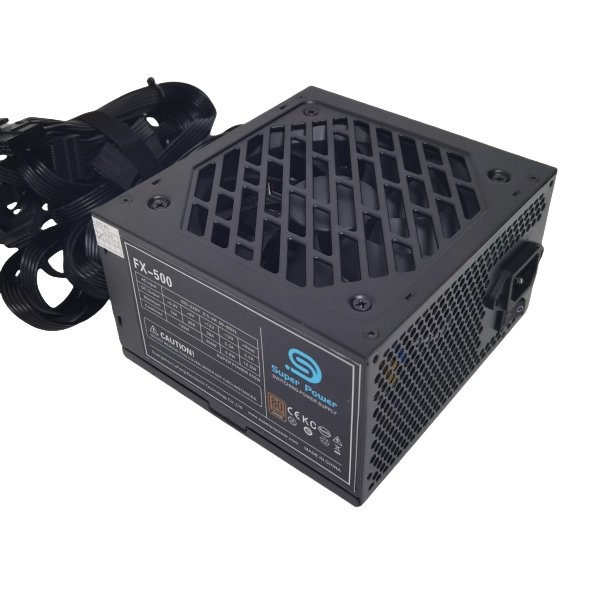-
Building E, No. 65 Xingshan North Road, Liangtian, Baisha Industrial Park, Baiyun District, Guangzhou

How To Quickly Tell PC Power Supply Is Bad In 3 Seconds
How to Tell If Your PC Power Supply Is Failing: Diagnosing and Troubleshooting Power Supply Failure
This comprehensive guide will help you how to tell PC power supply is bad. Knowing how to tell if your power supply is failing is crucial for preventing data loss, hardware damage, and frustrating downtime. We’ll explore the common signs of a failing power supply, explain how to test your PSU using various methods, and discuss when it’s time to replace it. This is essential reading for anyone who wants to maintain a healthy and reliable computer and understand how to identify power supply failure. I will share my expertise as a PC power supply, ATX power supply, SFX power supply, FLEX power supply, TFX power supply, and 80 Plus Gold manufacturer.
Table of Contents
1. Why is the PSU So Important?
The PSU, or power supply unit, is the heart of your computer’s electrical system. It converts the alternating current (AC) power from your wall outlet into the direct current (DC) power that your computer’s internal components (CPU, GPU, motherboard, storage, etc.) need to function.
A reliable PSU is critical for:
- Providing Stable Power: The PSU ensures a consistent and stable flow of power to all components, preventing system crashes, freezes, and data corruption.
- Protecting Components: Good PSUs include protection features (like over-voltage, under-voltage, and short-circuit protection) that safeguard your valuable hardware from damage due to power fluctuations or surges.
- Supporting Upgrades: If you plan to upgrade your components (e.g., add a more powerful GPU), you’ll need a PSU with sufficient wattage to handle the increased power demands.
In essence, a failing or inadequate PSU can cause a wide range of problems, making it essential to identify and address power supply issues promptly.

2. Common Signs of a Failing Power Supply
Here are some of the most common signs that your power supply might be failing:
- Random Shutdowns or Restarts: If your computer unexpectedly shuts down or restarts, especially under heavy load (like gaming or video editing), it could be a sign that the PSU is struggling to provide enough power. Unexpected shutdowns are a concern.
- System Freezes or Crashes: Frequent system freezes, crashes, or blue screen errors (BSOD) can also indicate a power problem. These issues often occur when the PSU can’t deliver stable power to the components. You may see a blue screen of death.
- Burning Smell: A burning smell coming from your computer is a serious warning sign. This could indicate that internal PSU components are overheating or failing. Immediately shut down your computer and unplug it if you notice this. A smell coming from the PSU should not be ignored.
- Strange Noises: Unusual noises coming from the PSU, such as buzzing, clicking, or whining, can indicate a problem. The PSU fan might be failing, or internal components could be damaged. These noises, like buzzing or clicking, are a warning. Strange noises should not be ignored.
- System Won’t Turn On: If your computer won’t turn on at all, the PSU is a likely suspect. Check the power cable and the power switch on the back of the PSU, but if those are fine, the PSU itself might be dead.
- Peripherals Malfunctioning: If you experience peripheral devices randomly disconnecting, it may be related to power.
- Overheating: If the outside of the PC case feels excessively hot.
These symptoms can be caused by other issues as well, but if you’re experiencing multiple symptoms, the PSU is a likely culprit. It is a good indicator that something is going wrong.
3. Basic Troubleshooting Steps
Before diving into more advanced testing, here are some basic troubleshooting steps:
- Check the Power Cable: Ensure the power cable is securely connected to both the PSU and the wall outlet. Try a different power cable to rule out a faulty cable.
- Check the Wall Outlet: Verify that the wall outlet is providing power. Try plugging another device into the same outlet to confirm it’s working.
- Check the Power Switch: Make sure the power switch on the back of the PSU is in the “on” position.
- Inspect Internal Connections: Open your PC case (after powering down and unplugging it) and check all the internal power connectors to ensure they’re securely connected to the motherboard, CPU, GPU, and other components.
- Reseat Components: Try reseating components like the GPU, RAM, and expansion cards. Sometimes, a poorly seated component can cause power-related issues.
- Reduce the Load: If you’ve recently added new hardware, try removing it to see if the problem goes away. This can help you determine if your PSU has sufficient wattage for your current configuration. Your components might be drawing too much power.
- Check for Dust: Dust and dirt inside the case can cause overheating.
These simple steps can often resolve power problems without requiring more complex testing or component replacement.
4. Testing Your PSU with a Multimeter
A multimeter is a versatile tool that can measure voltage, current, and resistance. You can use a multimeter to check the voltage output of your PSU, but this requires some technical knowledge and caution.
WARNING: Working with electricity can be dangerous. If you’re not comfortable using a multimeter or working with electrical components, it’s best to seek professional help.
Here’s a simplified overview of how to test PSU voltages with a multimeter:
- Disconnect Power: Power down your computer, unplug it from the wall, and disconnect all power connectors from the motherboard and other components.
- Prepare the PSU: You’ll need to “jump-start” the PSU to turn it on without being connected to the motherboard. This is typically done by shorting the green wire (PS_ON) and a black wire (COM) on the 24-pin ATX connector using a paperclip or a jumper wire. Insert one end into the green pin.
- Set the Multimeter: Set your multimeter to measure DC voltage. Check your voltages.
- Measure Voltages: Touch the multimeter probes to the appropriate pins on the PSU connectors to measure the voltages. You should see readings close to the expected values (e.g., +3.3V, +5V, +12V). The 12v rail provides power to many components.
- Interpret Results: Significant deviations from the expected voltages indicate a problem with the PSU. The readings may be slightly different from the stated values.
This method provides a more accurate assessment of the PSU’s health, but it requires some technical expertise.
5. Using a PSU Tester
A PSU tester is a dedicated device designed to simplify power supply testing. It’s much easier and safer to use than a multimeter for most users.
Here’s how to use a PSU tester:
- Disconnect Power: Power down your computer, unplug it from the wall, and disconnect all power connectors from the motherboard and other components.
- Connect the Tester: Plug the PSU connectors (24-pin ATX, 4/8-pin CPU, PCIe, SATA, Molex) into the corresponding sockets on the PSU tester.
- Power On: Plug the power cable into the PSU and turn on the power switch on the back of the PSU. The PSU tester should power on and display the voltage readings for each connector.
- Interpret Results: The tester will typically have LEDs or an LCD screen that indicates whether the voltages are within the acceptable range. Any failed readings or warnings indicate a problem with the PSU.
A PSU tester is a convenient and user-friendly tool for quickly checking the basic functionality of a PSU.
6. Checking System Logs (Event Viewer in Windows)
Windows Event Viewer can sometimes provide clues about power-related issues:
- Open Event Viewer: Press the Windows key, type “Event Viewer,” and press Enter.
- Navigate to System Logs: In the left pane, expand “Windows Logs” and click on “System.”
- Look for Errors: Look for error events related to power, kernel-power, or hardware failures. These events might provide information about the cause of shutdowns or restarts.
While Event Viewer doesn’t directly test the PSU, it can provide valuable context and help you narrow down the problem.
7. When to Replace Your Power Supply
If you’ve confirmed that your PSU is failing (through testing or observing multiple symptoms), or if it’s exhibiting clear warning signs, it’s best to consider replacing it promptly. Don’t wait for it to completely fail, as this could damage other components in your system. This will help to avoid a potential PSU failure.
Here are some situations where replacing the PSU is recommended:
- Confirmed PSU Failure: If a PSU tester or multimeter shows incorrect voltages.
- Multiple Symptoms: If your system is exhibiting multiple signs of a failing power supply (random shutdowns, burning smell, strange noises, etc.).
- Old PSU: If your PSU is more than 5-7 years old and you’re experiencing stability issues.
- Upgrading Components: If you’re upgrading to more power-hungry components (e.g., a new GPU) and your current PSU doesn’t have enough power. It might be that your components are drawing too much power.
Replacing a PSU is a relatively straightforward process and a worthwhile investment to protect your computer and data. It’s usually a fairly inexpensive component to replace.
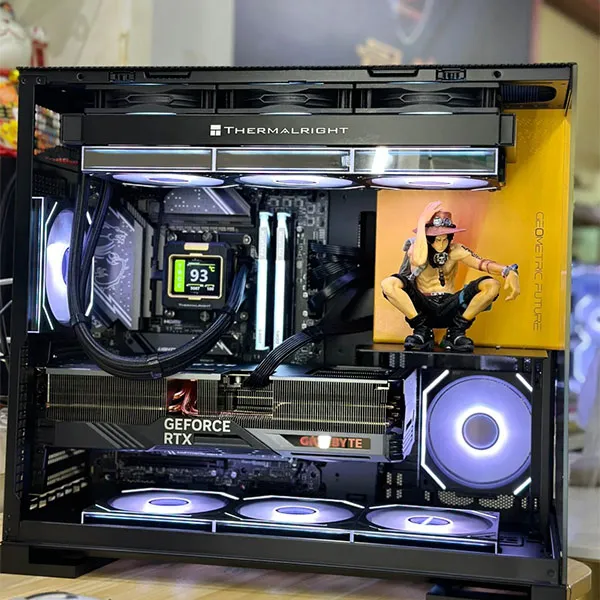
8. Choosing a Replacement PSU: Key Considerations
When choosing a replacement PC power supply, consider the following:
- Wattage: Calculate your system’s power requirements and choose a PSU with sufficient wattage, plus a buffer for future upgrades.
- Form Factor: Ensure the PSU’s form factor (ATX, SFX, TFX, etc.) is compatible with your PC case. We have various options, including ATX Power Supply, SFX Power Supply, FLEX Power Supply, and TFX Power Supply.
- Efficiency Rating: Look for an 80 Plus certified PSU (Bronze, Silver, Gold, Platinum, or Titanium) for better energy efficiency. Our 80 plus gold 850w power supply is a great option.
- Connectors: Make sure the PSU has all the necessary connectors for your components (motherboard, CPU, GPU, storage devices, etc.).
- Modularity: Consider modular or semi-modular PSUs for easier cable management.
- Warranty: A longer warranty indicates the manufacturer’s confidence in the PSU’s reliability.
- Brand: Stick with known computer power supplies brands.
Taking the time to choose the right replacement PSU will ensure your system has a reliable and efficient power source for years to come.
9. OEM Power Supplies: The Benefits of a Direct Partnership
As an OEM (PC power supply, ATX power supply, SFX power supply, FLEX power supply, TFX power supply, 80 Plus Gold) manufacturer, we understand the critical role that power supplies play in various applications. We provide solutions for many clients, including:
- PC Power Supply Brands: We provide the foundation for your brand.
- 3C Supermarkets: We offer high-quality power supplies at affordable prices.
- Computing equipment manufacturers: We provide customized power solutions.
- IoT device manufacturers: We can provide solutions for a variety of products.
- Power Supply Wholesalers: We offer bulk order options.
- Agents: Our expert team can assist you in the entire ordering process.
- Large Internet Cafes: We are capable of handling high-volume orders.
Partnering with us offers several advantages:
- Customization: We can tailor power supplies to your exact specifications, including wattage, form factor, connectors, cabling, and branding.
- Quality: We use high-quality components and rigorous testing procedures to ensure the reliability and performance of our power supplies.
- Cost-Effectiveness: Buying directly from the manufacturer often results in better pricing, especially for bulk orders.
- Expert Support: Our team provides technical support and guidance throughout the design and manufacturing process.
Working directly with an OEM manufacturer gives you greater control over the quality, specifications, and cost of your power supplies.
10. Case Studies: Real-World PSU Failure Scenarios Tell PC Power Supply Is Bad In Three Seconds
Here are some real-world examples of PSU failure scenarios and how they were identified:
- Case Study 1 (Random Shutdowns): A user experienced random shutdowns, especially when playing games. Monitoring software showed that the CPU and GPU temperatures were normal. The problem was eventually traced to an underpowered PSU that couldn’t handle the power demands of the system under load. This could be due to a failing PSU.
- Case Study 2 (Burning Smell): A user reported a strong burning smell coming from their computer. They immediately shut down the system and unplugged it. Upon inspection, the PSU was found to be the source of the smell, with visible signs of damage.
- Case Study 3 (System Won’t Power On): A computer completely failed to power on. Basic troubleshooting steps (checking the power cable, wall outlet, and power switch) didn’t resolve the issue. A PSU tester confirmed that the PSU was dead.
- Case Study 4 (Blue Screen Errors): A user kept experiencing BSOD errors. They used the Windows Event Viewer to trace the issue.
These case studies highlight the diverse ways in which a failing power supply can manifest and the importance of systematic troubleshooting. It’s essential to resolve power issues quickly.
Frequently Asked Questions
What are the most common signs of a failing PSU?
The most common signs include random shutdowns or restarts, system freezes or crashes, burning smells, strange noises (buzzing, clicking, whining), and the system not powering on at all.
Can a failing PSU damage other components?
Yes, a failing PSU can damage other components by providing unstable or insufficient power, or even by sending power surges through the system.
How can I test my PSU?
You can test your PSU using a dedicated PSU tester or a multimeter. A PSU tester is easier to use, while a multimeter requires more technical knowledge.
How long should a PSU last?
A good quality PSU can last 5-10 years or even longer, depending on usage, environmental conditions, and the quality of the unit itself.
What does the 80 PLUS certification mean?
The 80 PLUS certification indicates a PSU’s energy efficiency. A higher rating (e.g., 80 PLUS Gold) means the PSU is more efficient.
How do I know if my power supply is failing?
By using some of the steps listed in this article.

Summary
- A failing power supply (PSU) can cause various problems, from system instability to hardware damage.
- Common signs of a failing power supply include random shutdowns, freezes, burning smells, strange noises, and the system not powering on.
- Troubleshoot potential power issues by checking cables, connections, and component seating.
- Use a PSU tester or a multimeter to definitively test your PSU’s functionality.
- Replace your PSU promptly if it’s failing or exhibiting multiple warning signs.
- Choose a replacement PSU based on wattage, form factor, efficiency rating, connectors, and warranty.
- As an OEM power supply manufacturer, we offer customized solutions tailored to your specific needs.
- Partnering with us provides access to expertise, quality, cost-effectiveness, and customization options.
- We offer a wide range of power supplies for various applications, from gaming PCs to industrial systems. We have a PC POWER SUPPLY for everyone.
- Real-world case studies illustrate the importance of recognizing and addressing PSU issues promptly.
- This guide can help you to diagnose, and resolve, power supply problems.
- Our goal is to troubleshoot your power supply issues.

